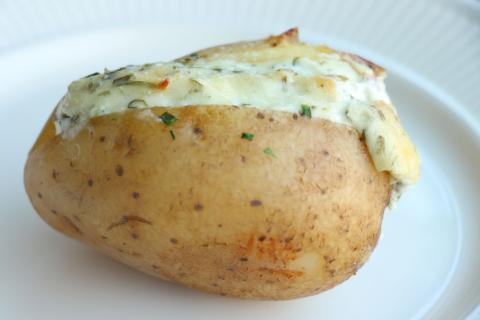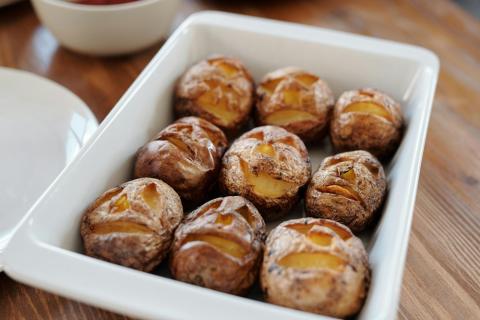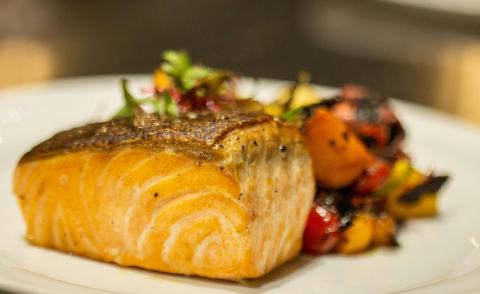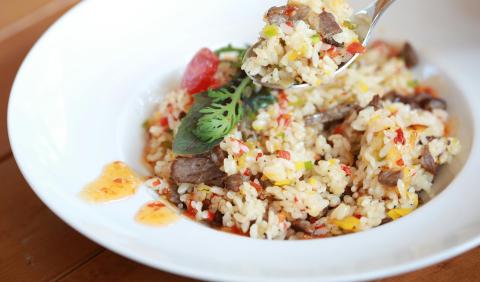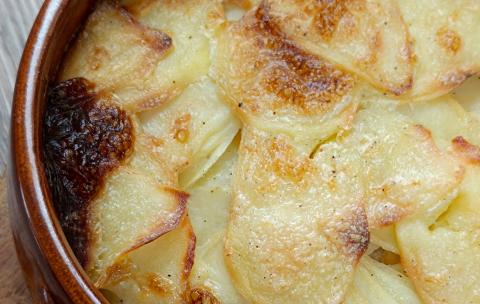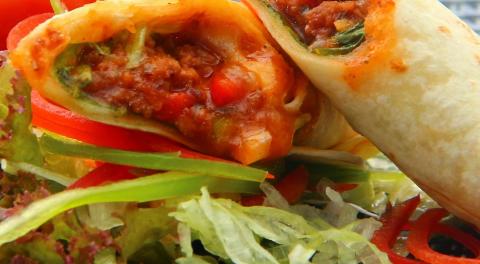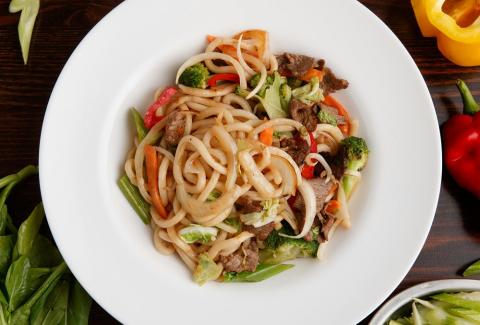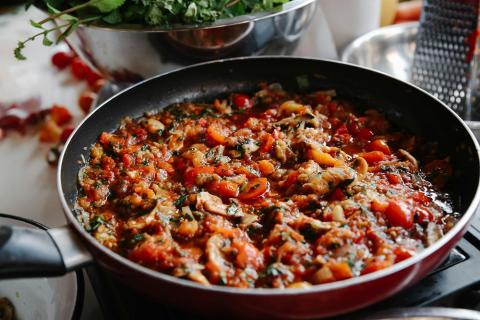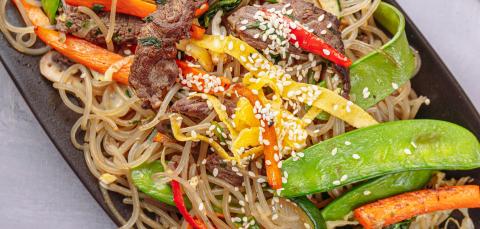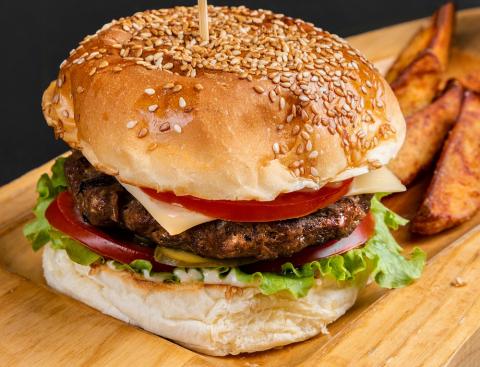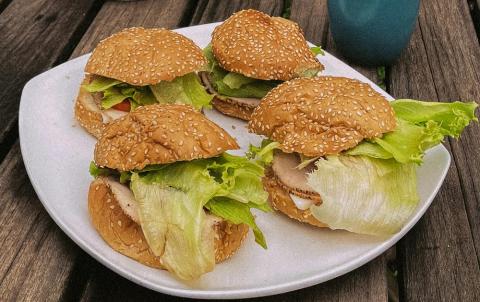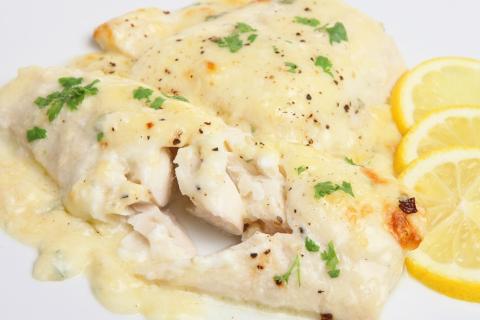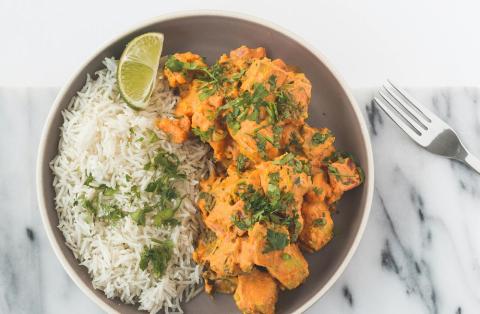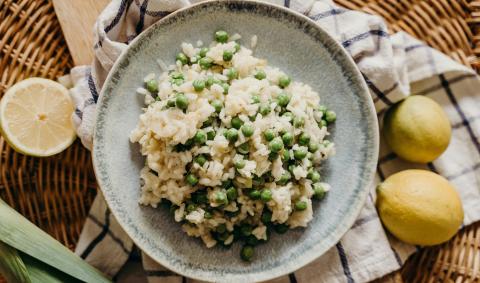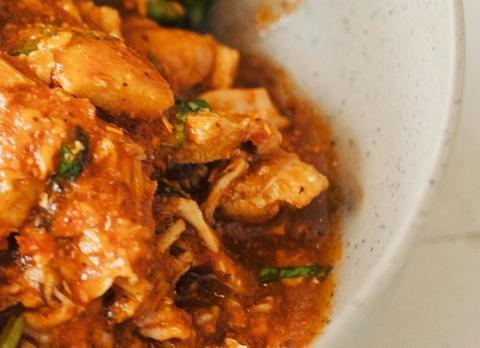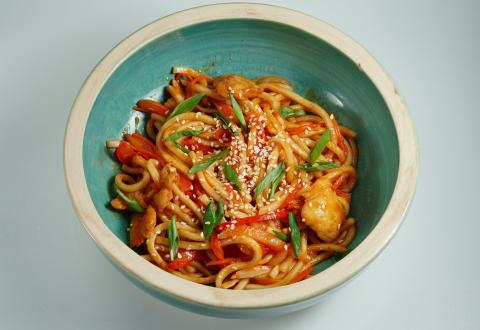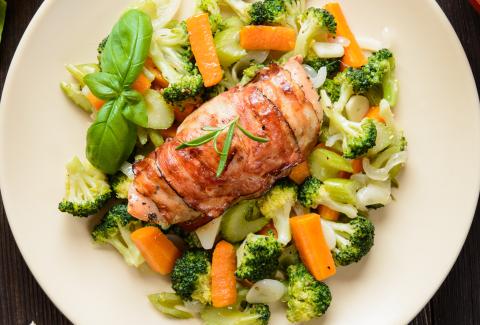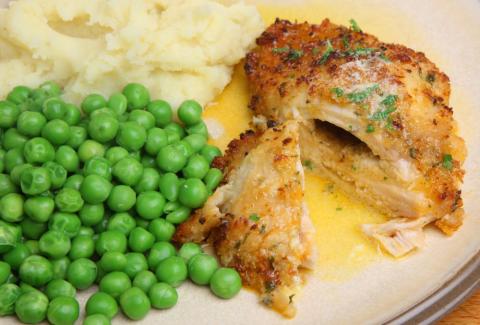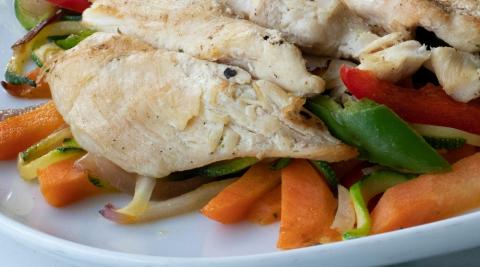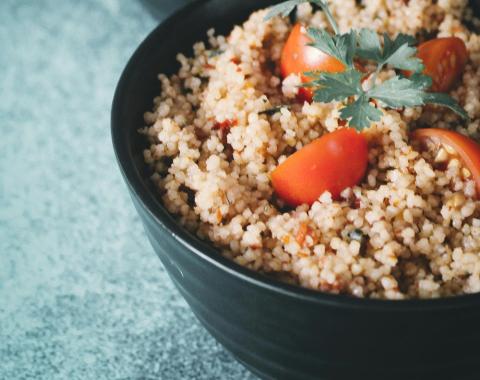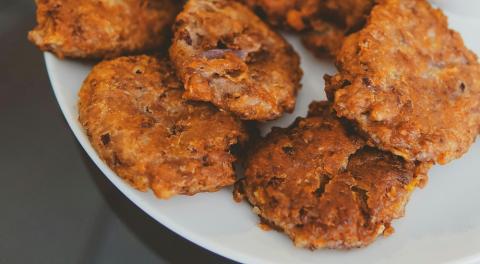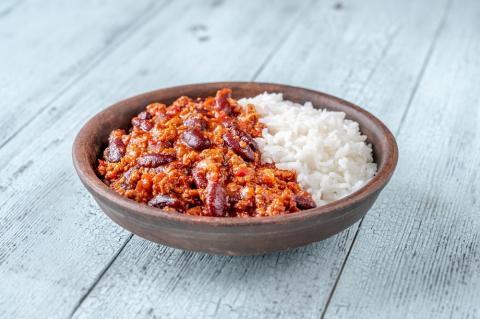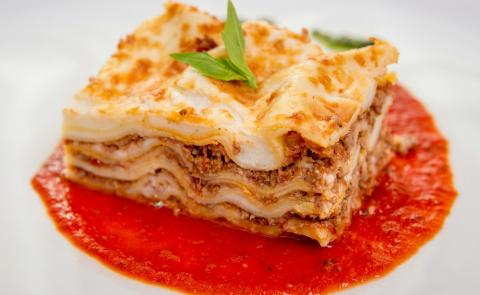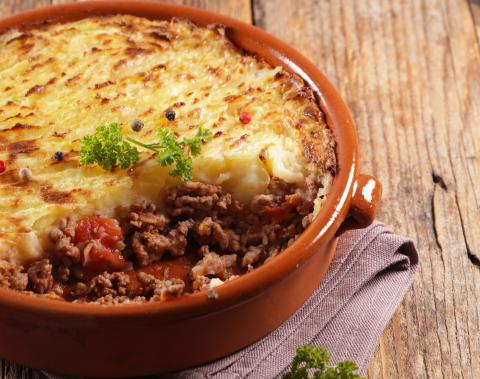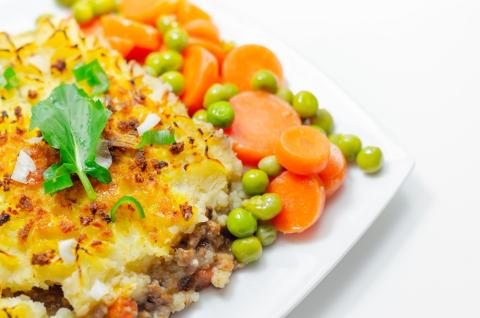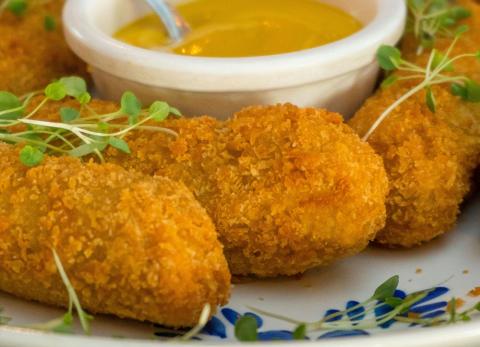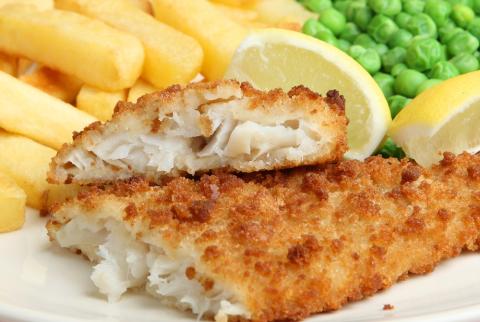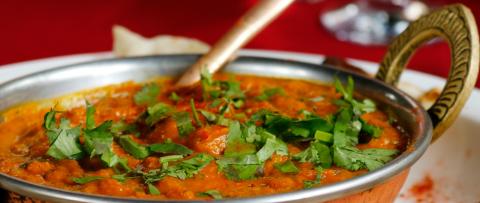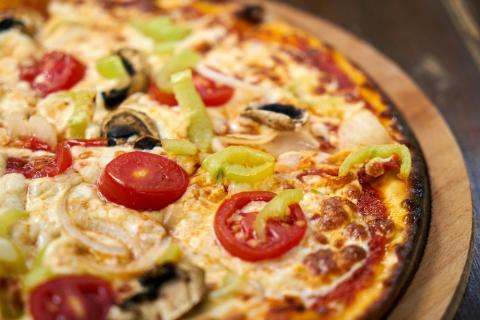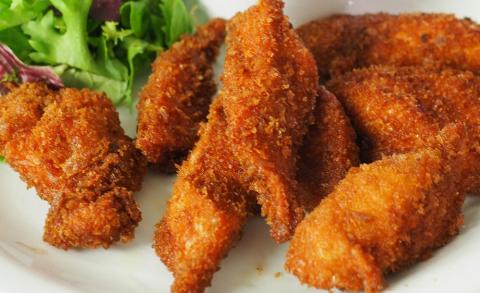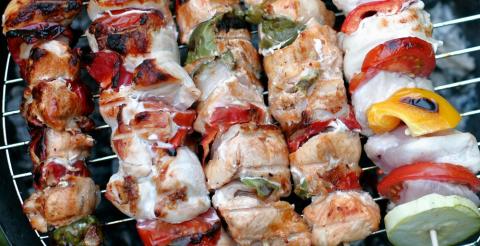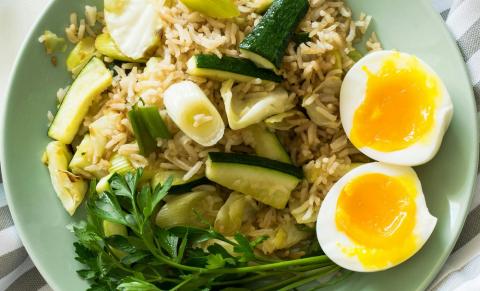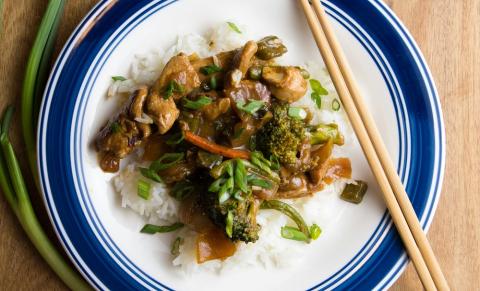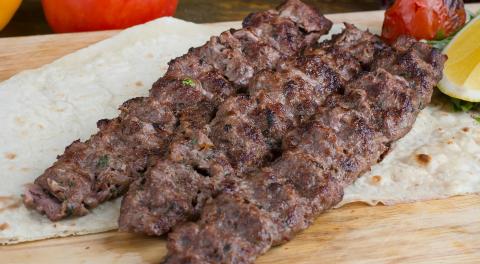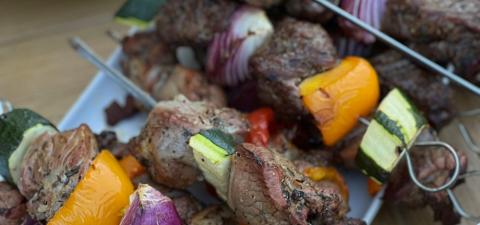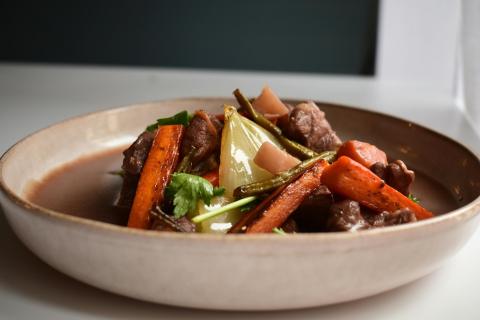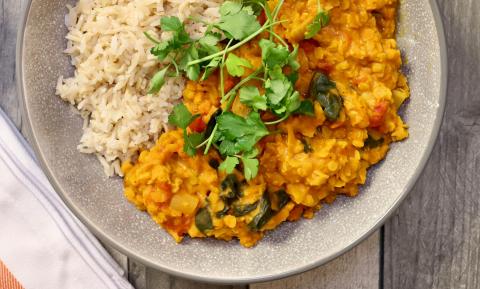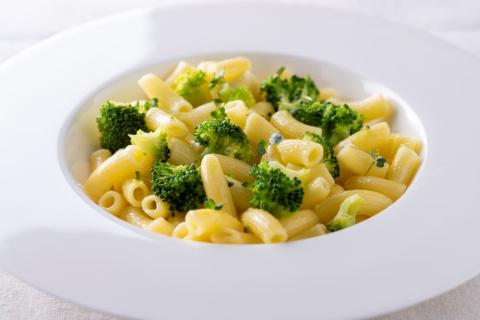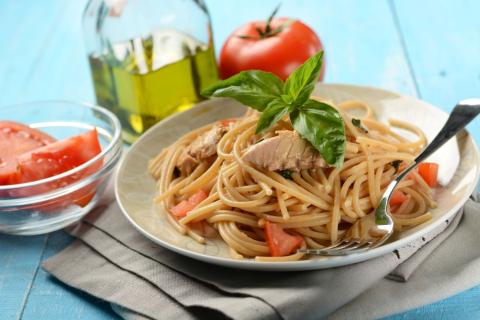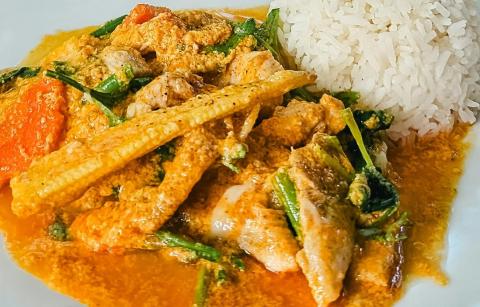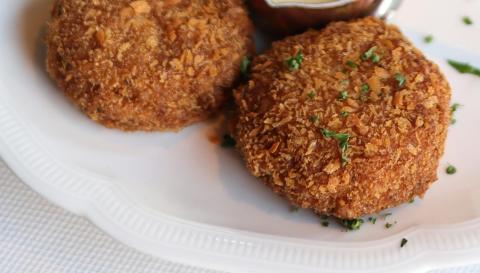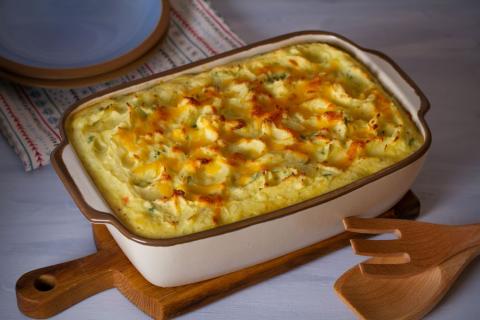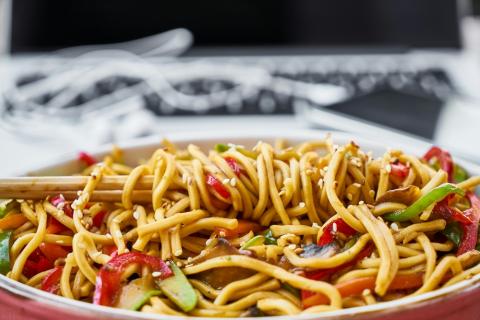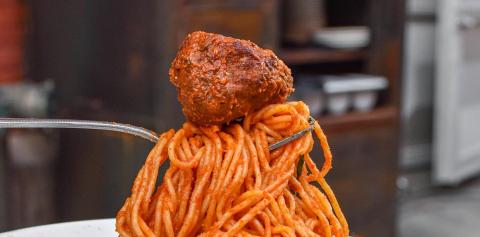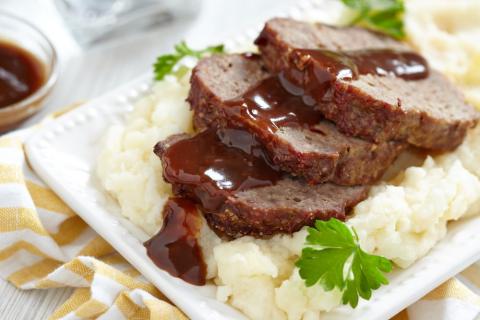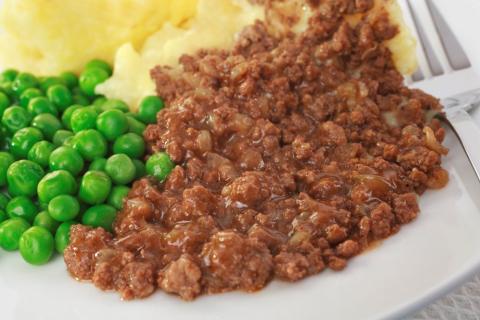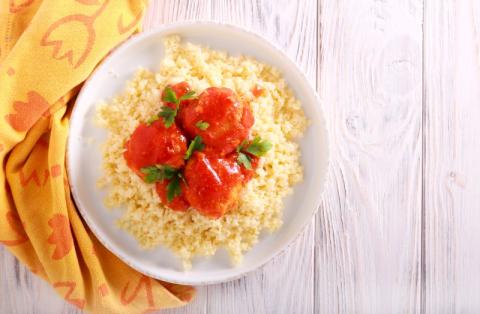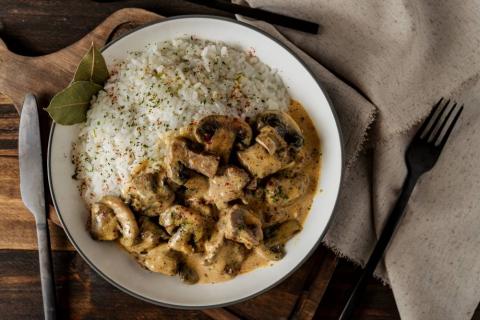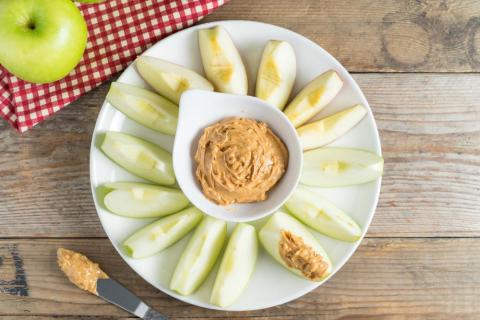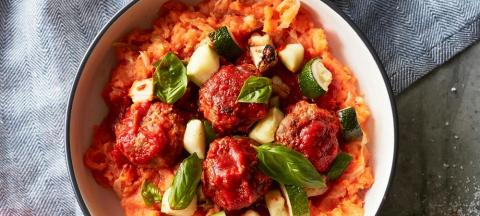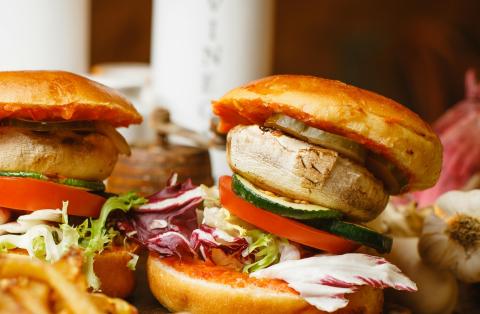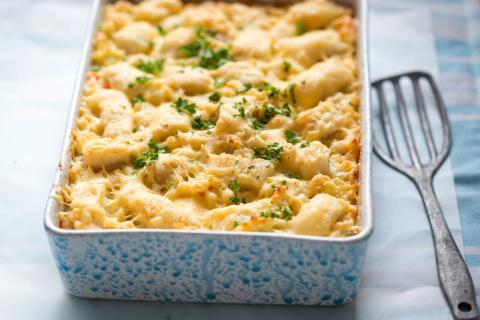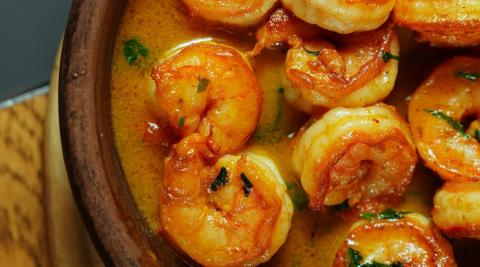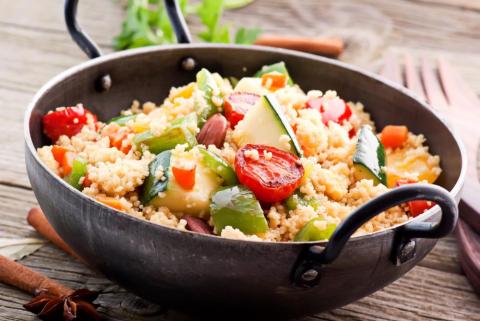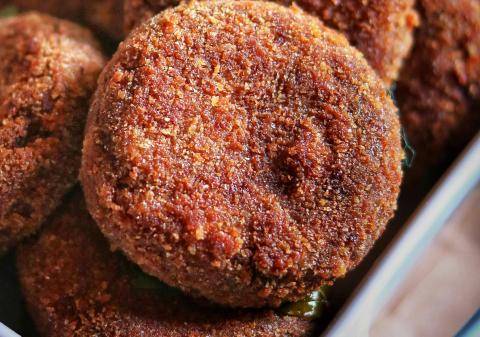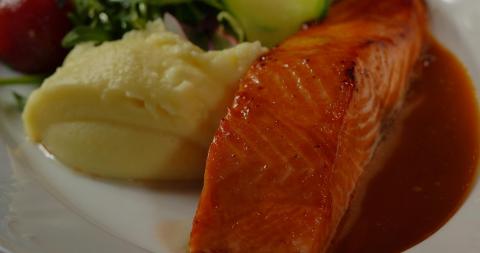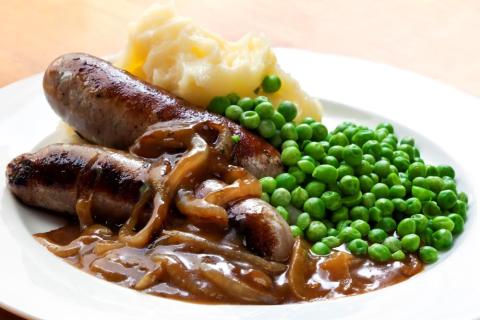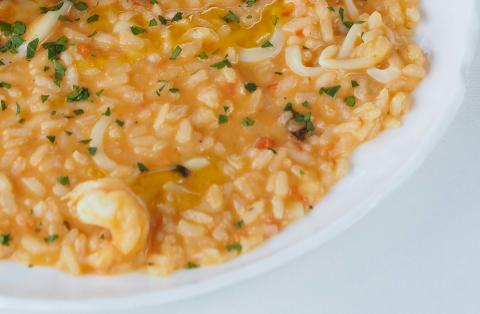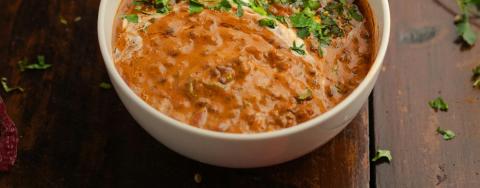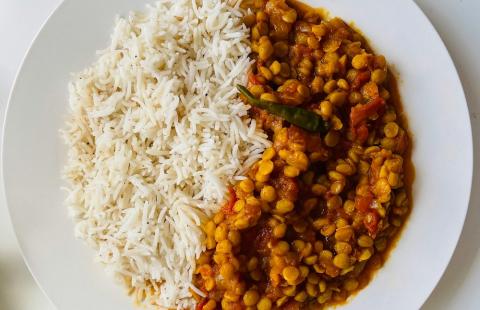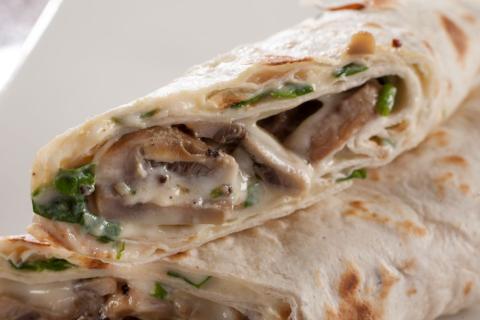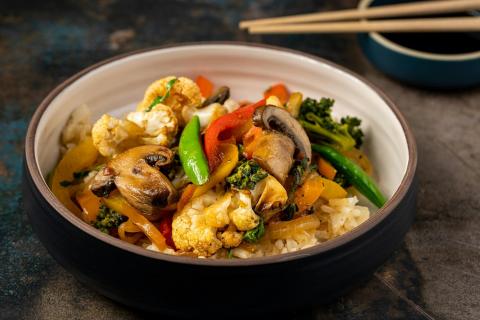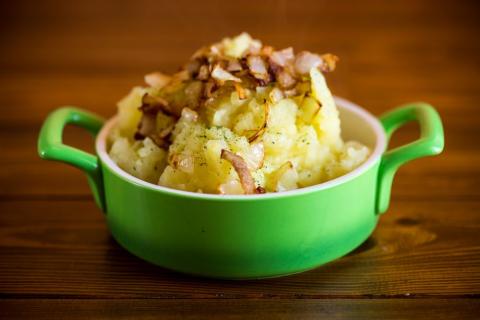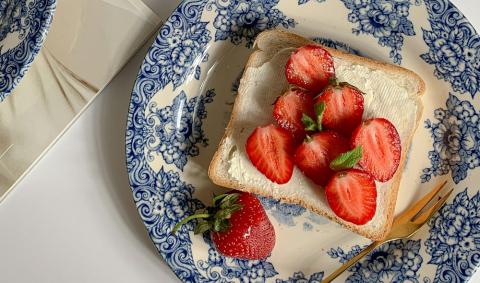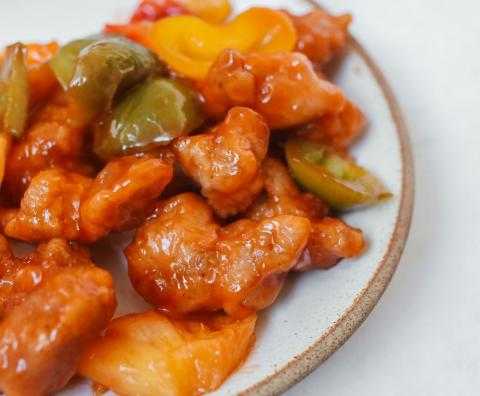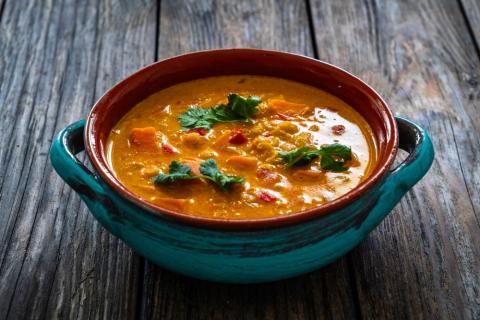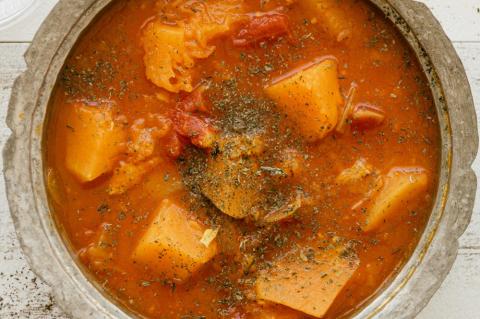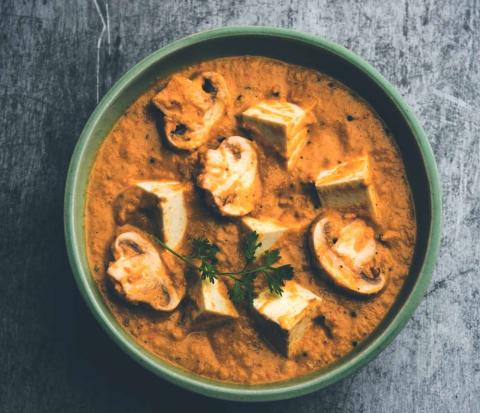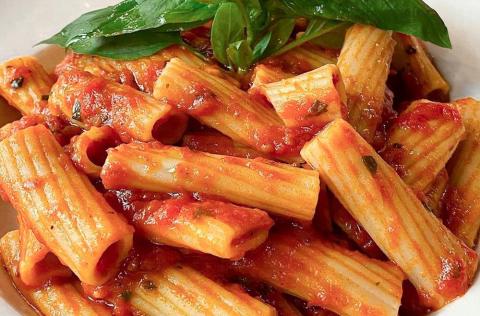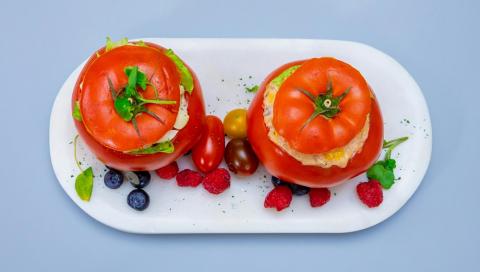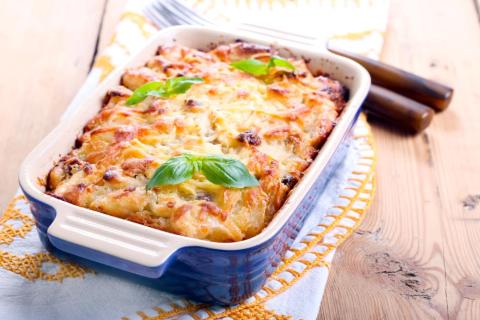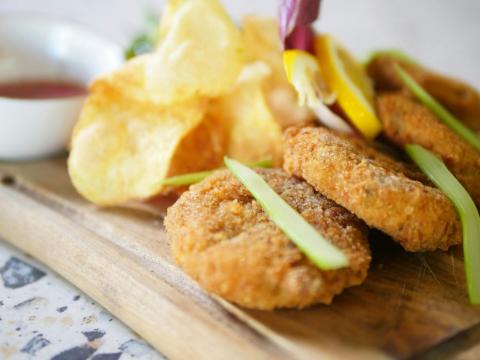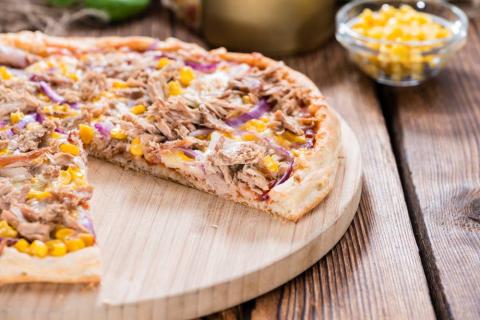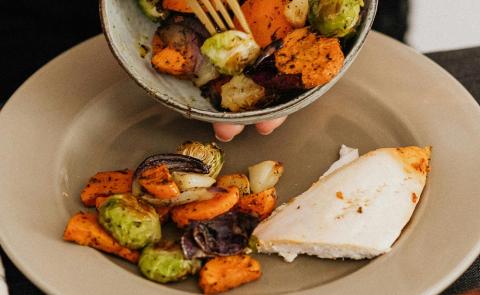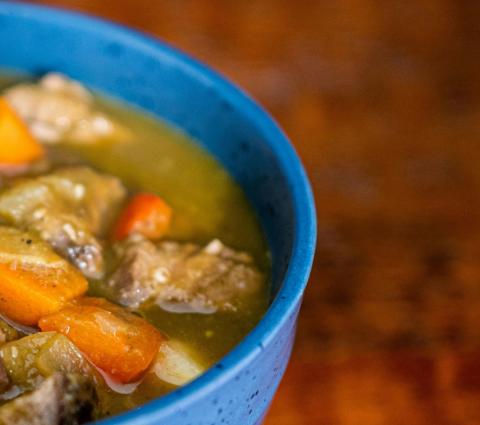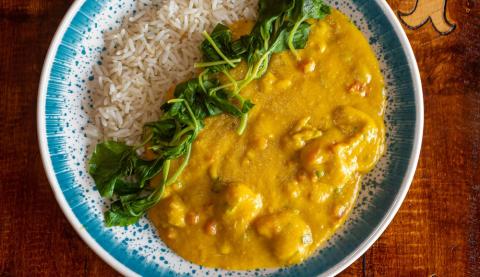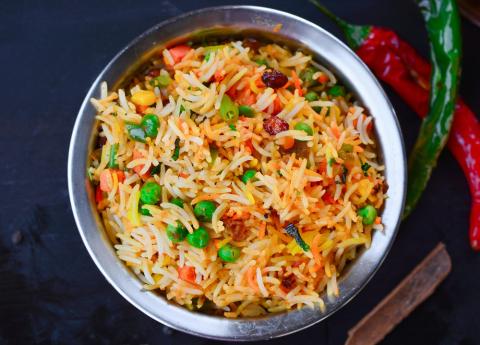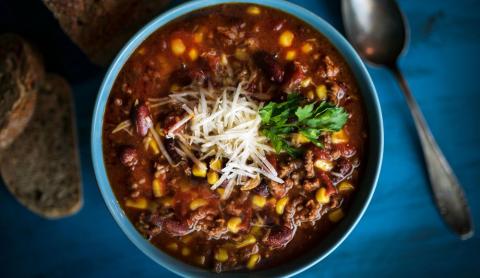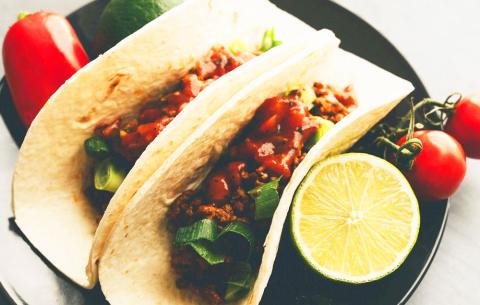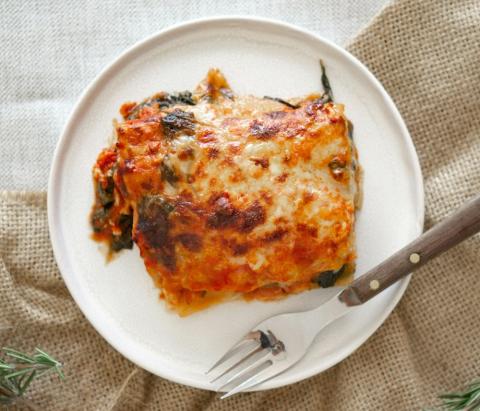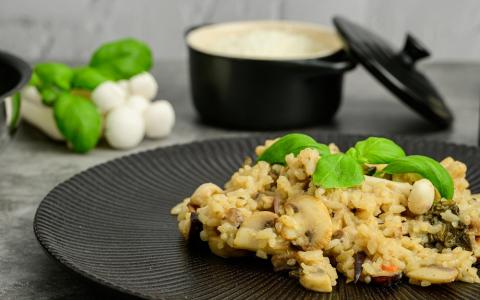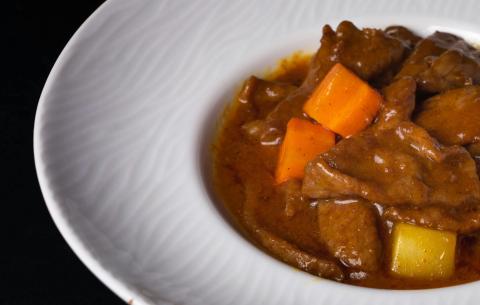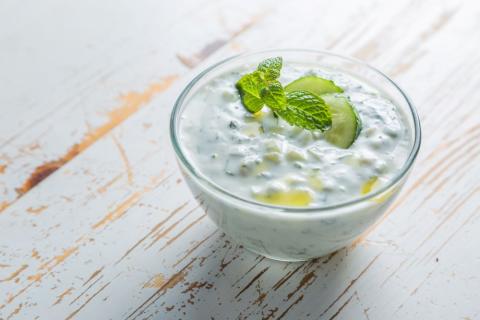- 1 (160g) Red Pepper
- 1 (160g) Yellow Pepper
- 1 (100g) Courgette
- 10 Medium (100g) Mushrooms
- 1 Large (240g) Red onion
- 2 Tablespoons (20g) Vegetable Oil
- 1 Pack (320g) Couscous
- ¾ Pint (450ml) Water
- 1 Reduced Salt (7g) Vegetable Stock Cube
- 3 Medium (255g) Tomatoes
- 1 Pinch Ground Black Pepper
Ingredients
Allergy Disclaimer
Always check the label of each ingredient for allergy warnings.
Method
- Preheat the oven to 200°C / 180°C fan oven / 380°F / gas mark 6.
- Peel the onion and deseed the peppers and then chop along with the courgette and mushrooms. Mix the vegetables with the oil in a roasting tin.
- Roast in the oven for 25-30 minutes, turning over after 15 minutes.
- Dissolve the stock cube in boiling water. Place the couscous into a heatproof bowl and add the hot stock, stirring to mix. Cover with a lid or plate and leave for 10-15 minutes then stir with a fork.
- Chop the tomatoes into chunks, remove the vegetables from the oven and add the tomatoes and couscous to the tin, mix together and add pepper as required.
- Return to the oven for a further 5 minutes to heat through, then serve.
Time Saver Tips
Why not make this in bulk? That way you can just pop it in the fridge, ready to enjoy the next day.
Cost Saver Tips
You could try making this with whatever vegetables you’ve already got in. Don’t worry about following exact recipe amounts, just aim to have around 600g or more of veggies to roast.
Tips for Kids
Your little one will love helping you to chop and mix things up – especially if they get to pick their favourite veggies! If you want your little one to get a bit more goodness, a really easy way is to add some pulses like canned chickpeas at the same time as adding the tomatoes.
Nutritional Information
Based on a single serving of 397g (% of an adult's reference intake)
Energy
413 kcals ( 21 %)
1,743 kJ ( 21 %)
Fat
1.2 g ( 6 %)
Saturates
77.8 g ( %)
Sugar
11.5 g ( 13 %)
Salt
0.1 g ( 2 %)
Detailed nutritional information
| Per 100g | Per 397g serving | |
|---|---|---|
| Energy Kcals | 104 | 413 |
| Energy Kj | 437 | 1,743 |
| Protein | 3.3 g | 13.1 g |
| Total Fat | g | g |
| Saturated Fat | 0.3 g | 1.2 g |
| Carbohydrates | 19.6 g | 77.8 g |
| Total Sugars | 2.9 g | 11.5 g |
| NSP Fibre | 1.6 g | 6.4 g |
| Sodium | 12 mg | 48 mg |
| Salt | 0.0 g | 0.1 g |
Find out about nutritional labelling
Nutrition labels on the front of packaging
- Most of the big supermarkets and many food manufacturers display nutritional information on the front of pre-packed food.
- Front of pack nutrition labels provide information on the number of grams of fat, saturated fat, sugars and salt and the amount of energy (in kJ and kcal) in a serving or portion of a recipe.
- The labels also include information about reference intakes (expressed as a percentage) which are guidelines about the approximate amount of particular nutrients and energy required for a healthy diet.
- The colour coding tells you at a glance if the food has high (red), medium (amber) or low (green) amounts of fat, saturated fat, sugars and salt.
- The more greens on the label, the healthier the choice
- Amber means neither high nor low, so you can eat foods with all or mostly ambers on the label most of the time.
- Reds on the label means the food is high in that nutrient and these are the foods we should cut down on. Try to eat these foods less often and in small amounts.
Food shopping tips
If you’re trying to decide which product to choose, check to see if there's a nutrition label on the front of the pack. This will help you to quickly assess how your choices stack up. You will often find a mixture of red, amber and green colour coding for the nutrients. So when you're choosing between similar products, try to go for more greens and ambers and fewer reds if you want to make a healthier choice.
 Activities & Play
Activities & Play Behaviour
Behaviour Childcare
Childcare Development & Growing Up
Development & Growing Up Family, Friends & Relationships
Family, Friends & Relationships Feeding Your Baby
Feeding Your Baby Food & Eating
Food & Eating Health & Safety
Health & Safety Mental Health & Wellbeing
Mental Health & Wellbeing Money & Work
Money & Work Online Behaviour & Safety
Online Behaviour & Safety Pregnancy & First Days
Pregnancy & First Days School & Education
School & Education Sleep
Sleep


